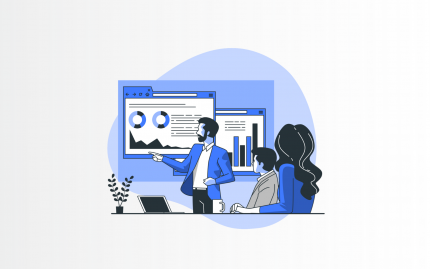
Then, we will reflect upon some of the reasons that should be kept in mind when facing the need to modernize the applications of your company.
Today, we can say that the modernization of your digital applications and processes is a direct synonym for gaining competitiveness in the market. However, despite this, the majority of the companies that started their migration and adaptation process to the digital world have not yet been able to complete them. The issue directly links to the lack of knowledge about new technologies, plus the professional’s absence of experience, and the shortage of definition by the company of the processes and final goals.
However, as we can see in recent months, especially with the COVID-19 pandemic, is that there has been a substantial increase in the search for modernization, it is that the central office has become a more acceptable way of working, plus the number of purchases made entirely online had a real ‘boom’
So this new reality is here to stay and, as the world moves further and further towards pandemic control, the need for application and system updates cannot be postponed.
1- The relationship between time and cost
I think these are the first reasons to consider. The need for speedy development and delivery of results, added to the reduction of costs of the process, has been the main reason for the search for modernization. What is clearer now is that traditional development is behind us, because it demands a lot of time and professionals with increasingly legacy knowledge. On the other hand, the modernization of development processes, with the adoption of software that streamlines the delivery of results and current technical components that are capable of being understood by many professionals available in the market today, has become increasingly common.
2- The limitations of the applications
However, it’s hard for a company to see how previous applications can satisfy the demands of two different businesses. And it is expensive and difficult, in some situations even impractical, to adapt old applications to the new demands for integrations of data, progress, and analysis. For this reason, many companies have chosen to develop or remodel their applications, in a more modern and efficient way that fits their needs.
3- Safety
Many managers point out that they have faced problems related to the security of their systems, mainly due to the danger of hacker attacks. The rush into digitization that companies had to face to gain agility and flexibility for their business, meant that information was released to the network, and the applications were put at risk. Much of this is because the old applications are not, in certain situations, ready to deal with this new scenario.
4 – Absence of professionals
Another point that we must consider is the lack of qualified professionals, a general complaint at present, what we see are several vacancies and few professionals capable of filling them. And this scenario is much worse when it comes to professionals who are knowledgeable and willing to work with old technologies. So if your company does not invest in modernization, the workforce will become much more expensive and scarce.
5- Innovation
Another point to ponder is the inability of companies to promote specific innovations in their processes. If we talk about Artificial Intelligence, for example, many companies claim to know how it works. But, what we still face today is the implementation of a minimum percentage of the concept. So, it turns into low profitability in terms of benefits.
In the long run, this lack of innovation has a direct impact on the competitiveness of the company.
6 – User experience
The User experience should be considered as a very important factor in the analysis. The users decide if the applications are good or bad. Generally, older applications tend to have many weaknesses that can be easily solved with more current technologies, for example, interface problems, API, mobility, response time, etc.
7 – Resilience and Performance
Old applications tend to fail much frequently over time, and this is one of the main reasons for lost profits in many industries. Therefore, modernizing systems to reduce the risk of failure and increase resilience should be a top priority for your business.
Conclusion:
So we can say without a doubt that legacy applications are a problem, as they tend to be expensive, difficult to maintain and make it very difficult for the company to keep up with the constant market updates as well as react to the business demands that arise. With these 7 points, I hope you can reflect on the needs of your company and that you can make the best decisions about the modernization of your applications.
Visit our Blog and see more contents!

Leave a Reply